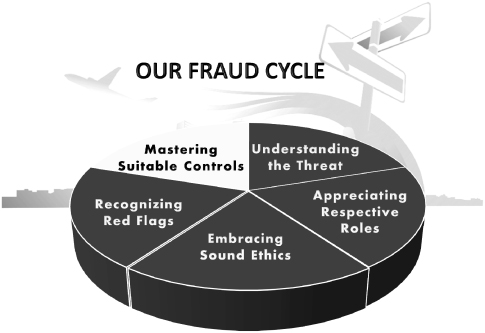18
Basic Controls
We had a look at control frameworks in the previous chapter and now we need to examine some of the basic controls that are available for combating fraud and abuse.
As you are aware, this book is based around the Fraud Smart cycle, which covers five key aspects of helping non-specialists get to grips with fraud at work. This is repeated in Figure 18.1.
Figure 18.1 The Fraud Smart cycle.

This chapter sits within the fifth part of the Fraud Smart cycle, Mastering Suitable Controls, and covers basic controls that can be used as standard mechanisms for fraud control.
WHAT CAN GO WRONG?
Everything we have said in the previous chapters of this book has established the context for fraud control. What is most important is to get the controls in and to make sure that they actually work. If we fail to install controls that can deal with the so-called trusted manager, who actually cannot be trusted, so much could go wrong.
We can consider how problems can arise by looking at two brief illustrative case studies taken from the UK and the USA. The first trusted manager worked in the construction industry:
CASE STUDY
A trusted construction manager for a plumbing and heating firm spent five years defrauding the company. He was responsible for managing construction jobs, which meant that he purchased supplies and provided documentation to support the payment of these goods. He would ...

